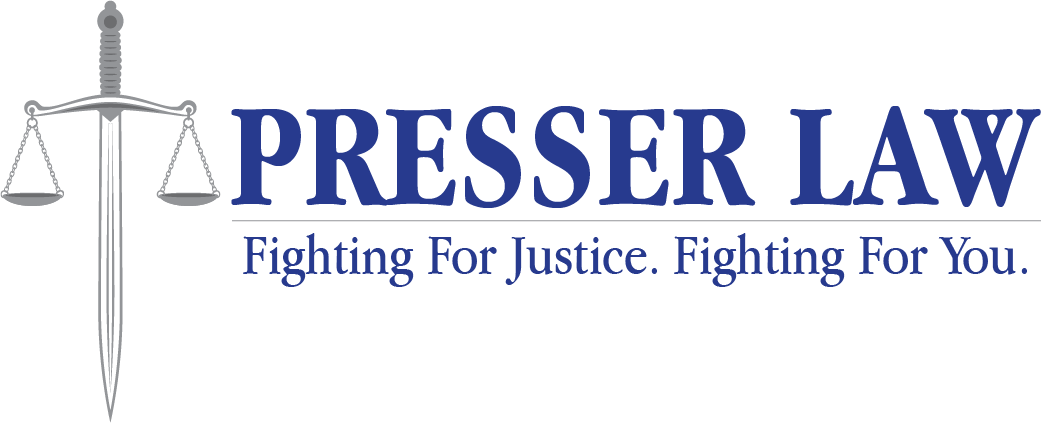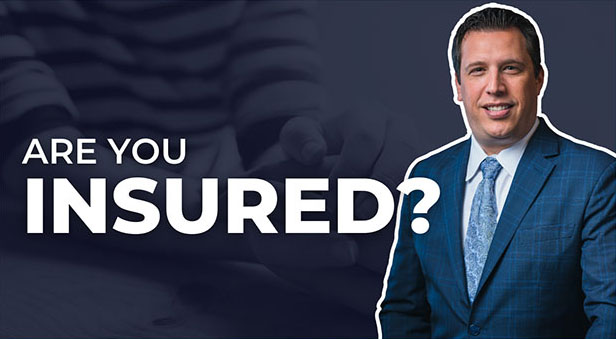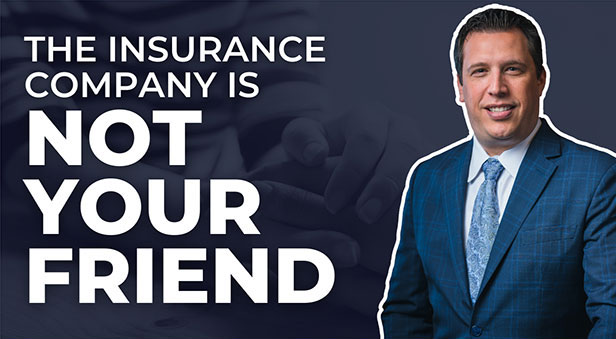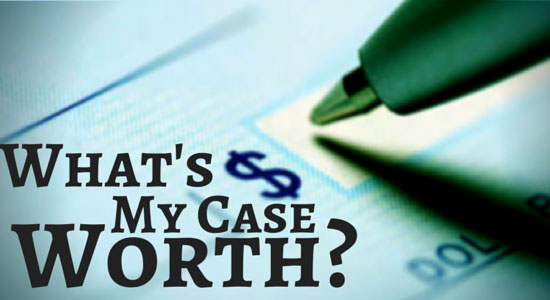
How Much Is My Case Worth?
“How much is my case worth?”
This is probably the question I get asked the most. As a result, I thought I would discuss what goes into determining case values. Please keep in mind that each case is different and this is simply intended to give you a general overview. Full analysis is too detailed for this post as analysis of your case’s value is extremely fact-specific.
However, before we begin let me just say the “How much is my case worth” is the wrong question. You should be asking “What is the value of my case?”
CASE VALUE LIMITS
So why do I use the term “value” over the term “worth”? Take your basic car accident, slip and fall, or dog bite case. In each of those cases, the person who causes you harm likely does not have sufficient money to personally pay for your injuries. As a result, the value of your case is typically limited to the amount of insurance coverage available. A case may be worth $1 million, but if there is only $50,000.00 in insurance coverage, your damages will generally be limited to that amount. In addition, insurance companies typically condition settlement on injury victims signing a release. This prevents injury victims from pursuing the insured any further. Therefore, the question about how much a case is worth is not the correct question to ask. You want to know the value.
WHAT GOES INTO CASE VALUE ?
Florida provides injury victims are allowed to primarily under two different sets of damages, economic damages and non-economic damages. Each of these sets of damages are made up of different elements, as seen in the chart below:
| Types of Economic Damages | Types of Non-Economic Damages |
| Past Medical Expenses | Pain and Suffering |
| Future Medical Expenses | Inconvenience |
| Past Wage Loss | Physical Impairment |
| Future Wage Loss | Mental Anguish |
| Property Damage | Disfigurement |
| Loss of Capacity for Enjoyment of Life | |
| Additional Losses Depending on Loss |
These are the types of damages you can claim. Now let’s explore what affects your case’s value.
PAST MEDICAL HISTORY
Prior medical and injury history play an important role in determining the value of a case. Injured persons must prove their injury was caused by the incident. Sometimes this is easier – such as where broken bones are involved. Sometimes there is a question about whether the injury was caused by a prior trauma or is the result something else – such as the natural aging process of the body. While these questions typically surround brain and spine injuries, they are not limited to these areas. They can include any injury and even the reason why someone died.
I hear three main arguments from insurance companies. The injury is either 1) The result of a prior incident, 2) the result of the bodies normal aging process, or 3) a result of the injury victim’s general health.
If you have been injured and the injury is anything other than clearly related, the odds of an insurance company raising one of these issues is close to 100%. As a result, your past medical history becomes relevant to proving your case. The more extensive your past history, the more it may play a part in affecting the value of your case.
_______________________________________________________________________
EXAMPLE:
Let’s examine how this works for a moment. Let’s say you were in an accident in May of 2018 and are complaining of neck pain. If you are treating with a medical doctor, your doctor may decide you need an MRI. If that MRI comes back with abnormal findings, then the question is whether those abnormal findings are related to the car accident or not. One way to help determine this is to look at your medical history. Have you had a prior car accident or not? Have you undergone an MRI prior to the 2018 accident? What do your medical records say about prior neck pain complaints?
_______________________________________________________________________
Prior medical records can be helpful. They offer a way to compare your condition prior the incident to your condition after it. If you examine two hypothetical MRIs, one before a car crash or other incident and one after, we may find that there is a change between those two MRIs. That change can help support what injuries may have been caused by the incident. Similarly, we may find that there were no prior pain complaints to the part of the body that now hurts.
Simply having an injury or health condition prior to the accident does not mean you lose your claim. Florida allows for financial compensation to injury victims for the aggravation of a pre-existing condition. However, it does mean that medical records can affect your case as you and the insurance company argue over what was caused by the crash.
MEDICAL BILLS
Another factor in determining the value of a case is the amount of medical bills. While this may seem obvious, it is not cut and dry. I have heard individuals relay that they thought damages were 3 times whatever the medical bills are. This is wrong. Your medical bills have to be taken into account with your prior medical history.
For example, I once represented someone with just over $10,000.00 in medical bills. However, based on their health history, I was able to secure a maximum insurance settlement of $250,000.00. Likewise, I have seen insurance companies offer minimal amounts where there were large medical bills because the insurance company argued the treatment was unrelated or unnecessary.
Medical bills are one factor in the value of your case. They do not solely determine the value of your case. Generally, however, the higher your medical bills are the higher the value of your case. This is because higher medical bills mean that injury victims have larger amounts to pay back to doctors who have provided them treatment.
MEDICAL TREATMENT AND PAIN AND SUFFERING
This may also be fairly obvious. The types and frequency of medical treatment you receive after an injury can play a significant role in your case’s value. This is especially true given that Florida allows injury victims to recover pain and suffering.
Generally, the more consistent someone treats, the better we can understand how an injury affects them since it provides us with more medical records to review. Those medical records will document pain complaints as well as any improvement or decline. In fact, it is not uncommon for injury victims to complain of worsening pain and new symptoms days, weeks or even months after a crash. Those pain complaints help to identify what might possibly going on and dictate the type of care the injury victim needs.
In addition to the amount of care someone has received, we also look to the specific type of care someone has received. Individuals are not all created the same. As a result, where one person may walk away from a crash, another person may suffer serious injury. There is no magic formula for determining how injured someone will be after an injury event. However, during the course of care we can see what types of treatment are rendered. Typically, the more invasive the treatment the higher the potential case value. For instance, someone who undergoes a surgery to their spine will typically see a higher case value than someone who does not.
In addition, once surgery has been performed, that is a permanent change to the body. Injury victims will continue to feel these effects for the rest of their lives. They may also require additional surgery later in life.
So generally, the more invasive the treatment you have the higher the value. Conversely, the more conservative treatment you have, the lower the value.
FUTURE MEDICAL BILLS AND TREATMENT
Florida allows injury victims to recover for future medical treatment and pain and suffering. Therefore, just as important as medical treatment and bills already incurred are the medical bills and treatment needed in the future. The more invasive or expensive your future care, typically the more value your case has. However, it is still your burden to prove the need for future treatment and care. This is done through experts such as your treating doctor.
Just as in the previous sections, insurance companies will almost always dispute the type of future care needed. The arguments are similar to the ones identified above that the alleged injury or future care is 1) The result of a prior incident, 2) the result of the bodies normal aging process, or 3) a result of the injury victim’s general health discussed. However, in addition to making those arguments, insurance companies will also argue that no future treatment is needed or no permanent injury exists.
COMPARATIVE FAULT
Florida is a comparative fault state. This means that juries are asked to determine what percentage of fault should be assigned to the injury victim, if any. That percentage can be anywhere from 0% to 100%. Once the percentage is determined, whatever the jury awards is reduced by that amount of fault on the injury victim.
______________________________________________________________________________
Example:
| Jury Award | Percentage of Fault on Plaintiff | Jury Award After Comparative Fault |
| $100,000.00 | 0% | $100,000.00 |
| $100,000.00 | 25% | $75,000.00 |
| $100,000.00 | 60% | $40,000.00 |
| $100,000.00 | 85% | $15,000.00 |
______________________________________________________________________________
Since a jury considers the comparative fault of injury victims in causing their own injuries, as injury attorneys we have to as well. Overlooking this important factor can result in overvaluing your claim. This results in basing your decision not on what your case is actually valued (or worth).
CONCLUSION
So those are some of the main factors in calculating what your case is worth:
- Availability of Insurance;
- Physical History;
- Medical Bills;
- Medical Treatment;
- Non-Economic Effects; and
- Comparative Fault.
I know what you are thinking. “Wait! This does not tell me what my case is worth!?” The answer is there is no precise formula that determines the value (or worth) of your case. It’s a combination of the factors listed as well as other factors not discussed. Valuation of cases are complex. No two cases are the same – that’s where attorneys come in.
GET YOUR FREE INJURY CASE REVIEW TODAY
If you have been injured, contact Presser Law, P.A. for a free case review with an attorney to determine your legal rights. For over 10 years, I have represented injury victims in their times of need and would honored to help you as well.
Click For Free Case Review
_______________
For more information or to speak with a lawyer about your legal rights following an injury, call 407.216.2000, email me at [email protected] or click for a free attorney case review.
Located in Altamonte Springs, Presser Law, P.A. is a Central Florida injury firm proudly serving all injury victims throughout Central Florida residents of Brevard County, Lake County, Osceola County, Orange County, Seminole County, and Volusia County.
Presser Law, P.A. was founded on the idea that injury victims deserve aggressive and straight forward representation to help them through some of their most difficult times. “Fighting for Justice. Fighting for You.” is more than a motto. It is our promise and reminder to our client’s that we will be with them, fighting to make sure they receive the compensation they deserve.
